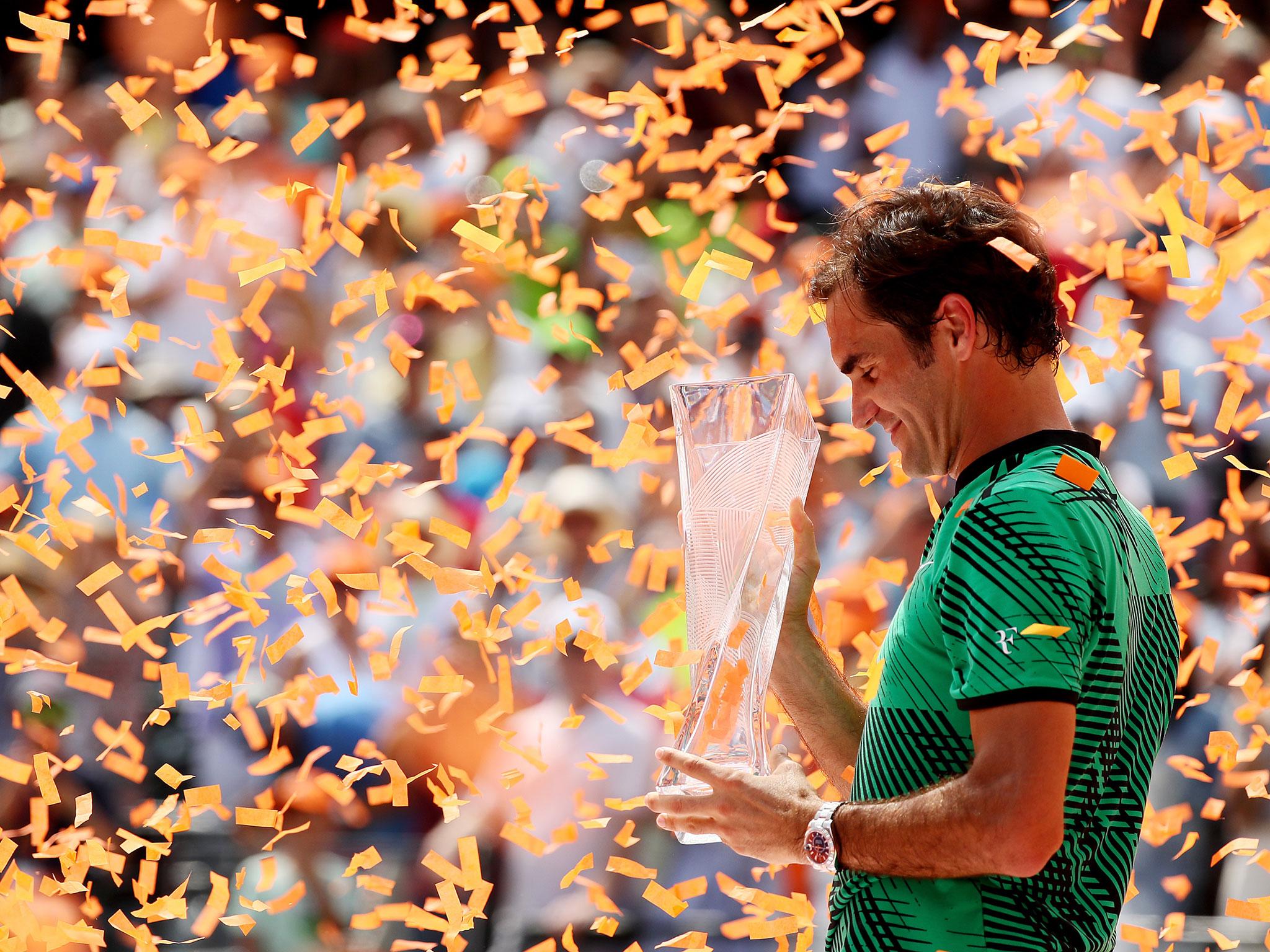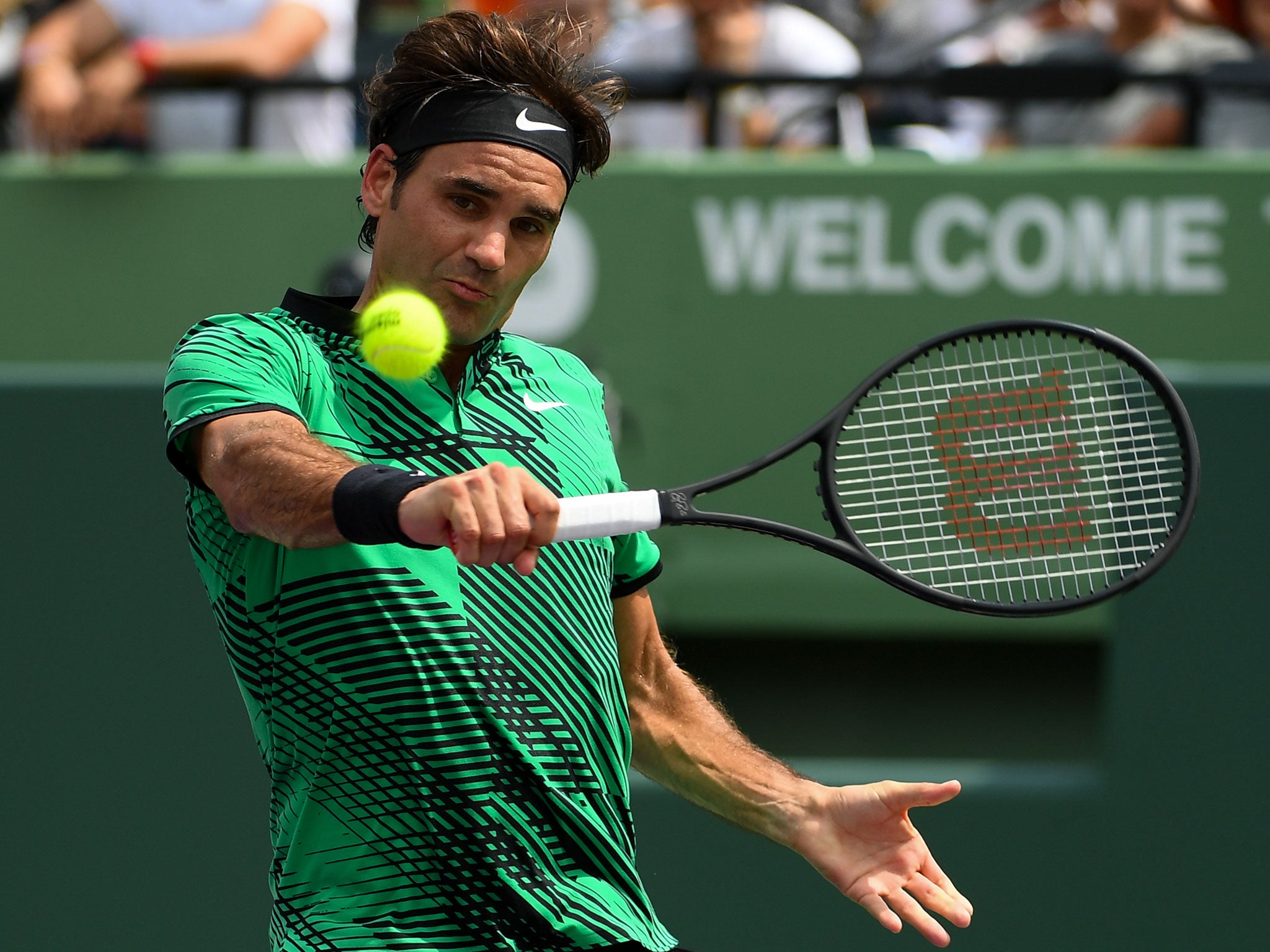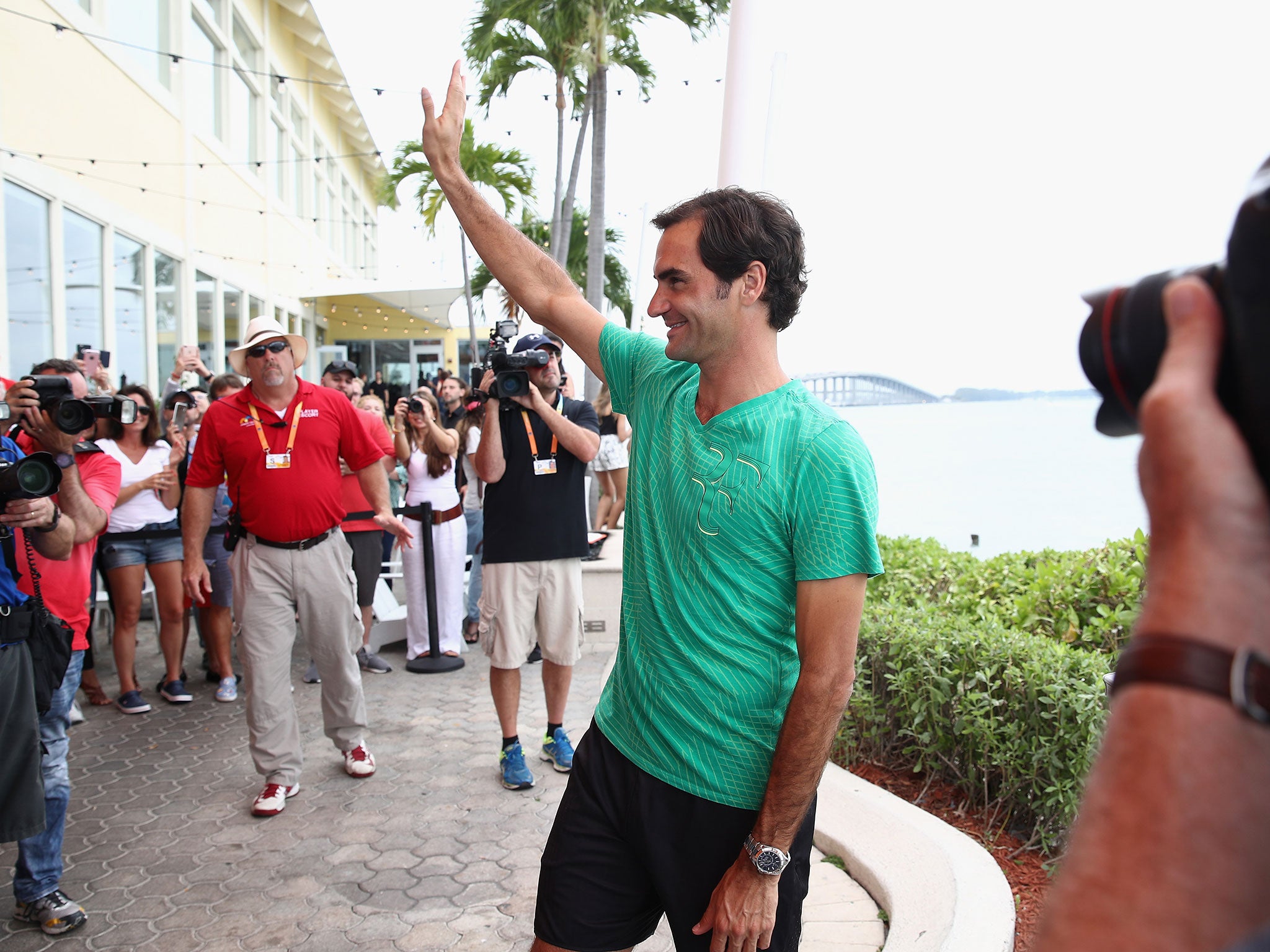Roger Federer's glorious exploits continue to defy expectation as tennis' greatest star reaches new heights
The Swiss continues to move from strength to strength as he nears his 36th birthday. His feats are without parallel and surely confirm his status as the sport's greatest

Your support helps us to tell the story
From reproductive rights to climate change to Big Tech, The Independent is on the ground when the story is developing. Whether it's investigating the financials of Elon Musk's pro-Trump PAC or producing our latest documentary, 'The A Word', which shines a light on the American women fighting for reproductive rights, we know how important it is to parse out the facts from the messaging.
At such a critical moment in US history, we need reporters on the ground. Your donation allows us to keep sending journalists to speak to both sides of the story.
The Independent is trusted by Americans across the entire political spectrum. And unlike many other quality news outlets, we choose not to lock Americans out of our reporting and analysis with paywalls. We believe quality journalism should be available to everyone, paid for by those who can afford it.
Your support makes all the difference.As Roger Federer hit a succession of stunning backhands, charged into the net to strike assured winning volleys and played some scarcely believable half-volleys from the baseline, it was hard not to wonder whether the 35-year-old Swiss has ever played better.
Federer’s crushing 6-3, 6-4 victory over Rafael Nadal in the final of the Miami Masters on Sunday took his record in 2017 to 19 victories in 20 matches. Having also won the titles at the Australian Open and Indian Wells Masters following his return after a six-month injury lay-off, the old master is already back up to No 4 in the world rankings.
If the statistics are remarkable enough, it has been the manner of his victories that have all but defied belief. Nadal, who also lost to his great rival in the Melbourne final and in the fourth round at Indian Wells, is another enjoying a new lease of life after an injury-plagued 2016, but there were periods in the Miami final when the 30-year-old Spaniard was comprehensively outplayed in the latest of their 37 career meetings.
We have come to take for granted Federer’s majestic forehand, his wonderfully consistent serve and his lightness of foot, but he has new weapons in his arsenal this year.
Federer’s driven half-volleys from the baseline have repeatedly taken opponents by surprise by turning defence into instant attack. He plays them from positions where even defensive shots would be extremely difficult for most. His timing and touch are so exquisite that he has been hitting them for winners past his nonplussed rivals.
If the seven-times Wimbledon champion used to have a significant weakness it was his backhand, which Nadal in particular always targeted. Hitting his ferocious forehand cross-court with heavy top spin, Nadal would drive Federer back, forcing the Swiss to play his backhands at shoulder height.
Now Federer is fighting fire with fire by taking the ball early and going for his shots. He rarely slices his backhand and instead hits through the ball, usually with great power.
“I’m definitely trying to play creative tennis, trying to go for my shots,” Federer said. “I’m able to take the backhand earlier, which allows me also to hit more backhand winners off the baseline.”

What does Federer think about the suggestion that he might never have played better? He finds it hard to agree with that contention given the way he swept all before him in his early twenties - between 2004 and 2006 he won 34 titles and lost just 15 of the 262 matches he played - but points out that the challenges provided by rivals like Nadal, Novak Djokovic and Andy Murray have forced him to keep improving.
“I think I play differently to when I was 24 and my technique has changed from when I was 19,” Federer said. “On the offensive side, overall, I think I’m definitely doing a few things better than I ever have.
“I do feel that I have improved. The game has evolved and I had to adjust and change. Overall I do believe I’m probably a better player than I was 10 years ago, but it doesn’t always translate into results per se, because other guys came up and did extremely well, like Novak, Rafa and Murray.”

Federer’s willingness to learn has been crucial. Ivan Ljubicic, who joined his coaching entourage at the end of 2015, has encouraged the more attacking style. The former world No 3 also stayed positive last year when Federer took time out to recover from his knee problem.
“He was incredibly supportive and he always reminded me that the good times are going to come around,” Federer said. “He's also got a winner’s mentality, which I like. He wants me to win every single point, every single match.”
With Federer completing his third “Sunshine Double” of the Indian Wells and Miami titles, it is no wonder that that there is speculation as to whether he can add to his all-time record total of 302 weeks at the top of the world rankings, particularly as Murray and Djokovic, the top two in the list, have had their troubles this year and are currently nursing elbow injuries which forced them to miss Miami.

Federer, nevertheless, knows that, four months short of his 36th birthday, he cannot take his fitness for granted. Rather than targeting a return to world No 1, he has his eyes on more Grand Slam glory, particularly at Wimbledon, where he needs one more title to become the most successful male singles player in All England Club history. William Renshaw and Pete Sampras currently share with Federer the record of seven titles.
Wisely, Federer has decided not to put his body through the slog of a full clay-court season. He said on Sunday night that his next appearance is likely to be at the French Open, which starts on 28 May, which would see him miss the clay-court Masters Series tournaments at Monte Carlo, Madrid and Rome. Even then it would be sensible not to rule out success at Roland Garros, where he has reached five finals, losing four of them to Nadal.
However, it is not inconceivable that Federer would skip the whole clay-court season, including its climax at the French Open. The Swiss admits that he had knee trouble playing on clay last year. His current plan is to keep training on hard courts until a fortnight before Roland Garros.

Wimbledon and the US Open have always been Federer’s happiest hunting grounds. In planning his comeback this year the season’s last two Grand Slam events – and Wimbledon in particular - were always his highest priority. He has already committed to play in two grass-court tournaments before Wimbledon, at Stuttgart and Halle.
“Unfortunately, I can't do it all,” he said. “I can’t chase the Davis Cup and the Slams and play all the Masters 1000s. At some point something has to give, unfortunately. I wish I could do it all like when I was 24 years old. That’s where I have to take some important decisions.”
The likes of Monte Carlo, Madrid and Rome will rue Federer’s absence, but the rest of the sport will appreciate the need for the greatest player in history to remain in peak condition for as long as possible. His glorious exploits this year have reminded us what we will miss when he finally departs the stage.
Join our commenting forum
Join thought-provoking conversations, follow other Independent readers and see their replies
Comments